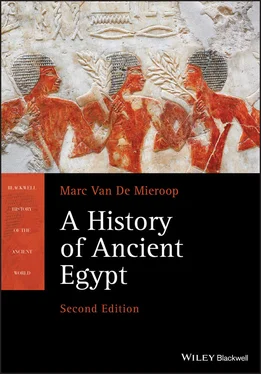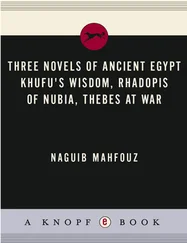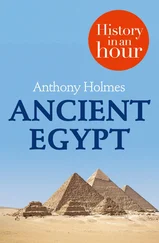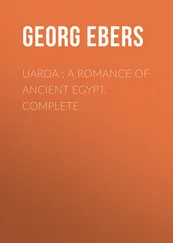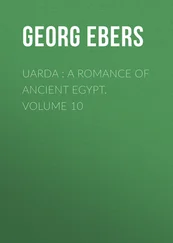Figure 5.7This stele was set up in Abydos by the brother of Rehuerdjersen, who was treasurer under the first two 12th‐dynasty kings. It was part of his cenotaph, a monument intended to connect the dead to Osiris and to benefit from the offerings that the god received. The text lists the requisite offerings as “1000 bread; 1000 beer; 1000 meat; 1000 poultry; 1000 linen; 1000 clothing. Incense.” Most of the inscription is taken up by the names of Rehuerdjersen’s family members. Metropolitan Museum of Art 12.182.1. Source: Rogers Fund, 1912
Figure 6.1This 55‐cm‐high limestone funerary stele was made for an official called Mentuhotep, whose image is painted on it. The offerings he receives include bread, a goose, and the leg, heart, and head of a bull. Alongside the small mummified figure between the man’s legs is the text “The Syrian woman Sat‐Hathor,” identifying his deceased wife as a Syrian woman who had an Egyptian name. Aegyptisches Museum und Papyrussammlung, Staatliche Museen, Berlin. Source: bpk Bildagentur / Art Resource
Figure 6.2Detail of the Rhind mathematical papyrus. British Museum, London EA10057. Source: Art Resource
Figure 6.3This 7.8‐cm‐high double vase onto which the images of lotus flowers was carved is a typical example of what archaeologists call Tell el‐Yahudiyya Ware. Pottery of this type was used extensively for trade throughout the eastern Mediterranean and is also found in Nubia. A small vessel of this type could have been used to ship scented oil. Metropolitan Museum of Art 23.3.39. Source: Rogers Fund 1923
Figure 6.4This 11‐cm‐high ceramic beaker is typical for the archaeological culture that we call Classical Kerma. Its decoration resulted from placing the vessel upside down in the ashes when firing the clay, which turned the upper part black because no oxygen reached it and the lower part red. Numerous examples of these were found in Nubian tombs as far south as the 4th cataract, but they were also exported to Egypt, perhaps to be placed into tombs of Nubians who had moved there. This example was excavated at Abydos. Metropolitan Museum of Art 20.2.45. Source: Rogers Fund 1920
Figure 6.5The rulers of Kerma during the Classical Kerma phase had themselves buried in monumental tumuli, that is, earthen mounds over a burial chamber. This is the plan of tomb K X, with a 90‐m diameter. It had subsidiary graves dug into it, and a corridor that contained the bodies of 332 human sacrificial victims, many of them women. There were also dogs, donkeys, and horses under the tumulus, while ox skulls lined part of the exterior. Source: Smithsonian Institution
Figure 6.6Since the Kerma state at the time of the Second Intermediate Period in Egypt did not use writing, we do not have access to the names of the kings of that state. One name is known, however, because the funerary stele of an Egyptian who remained at Buhen after Egypt’s control over the fortress ended acknowledges without hesitation that the soldier served the Nubian ruler Nedjeh. Sudan National Museum no 18
Figure 7.1Chariots were introduced in Egypt at the start of the New Kingdom and long remained an exclusive item of prestige. It was used in warfare and in hunting, and this modern facsimile of a scene from the tomb of Userhat, royal scribe of Amenhotep II, shows him shooting animals from atop his chariot as a sign of his special status in life. Metropolitan Museum of Art 30.4.42. Source: Rogers Fund 1930
Figure 7.2The images painted on the walls of the tombs of government officials represent aspects of their activities while alive, and some show to us how foreigners came to Egypt to bring tribute. This image from the tomb of Rekhmira depicts men from the Aegean dressed in their local costume and bearing an elaborate metal vessel and a metal ingot in the shape of an ox hide. Metropolitan Museum of Art 31.6.42. Source: Rogers Fund 1931
Figure 7.3The reliefs carved on the walls of Hatshepsut’s mortuary temple at Deir el‐Bahri include an elaborate depiction of a voyage to the land of Punt, the source for products needed for the cult such as incense. Like a graphic novel, the gigantic relief, some 30 m long and 5 m high, shows how ships sailed to Punt and illustrates the exotic aspects of that distant land, including houses, flora, and fauna. This detail (38 by 45 cm) shows the prince of Punt, Perihu, and his wife Eti, who is depicted as being very different from the Egyptian ideal of women’s beauty. Their names are given in the inscription on a neighboring panel. Egyptian Museum, Cairo, JE 14276. Source: Erich Lessing / Art Resource
Figure 7.4This 213‐cm‐high limestone statue of Hatshepsut, which was originally painted, shows the queen with both male and female features. She wears only a kilt, rather than a dress that would cover her whole body, and the headdress is one of male rulers. But some of her physical features, including small breasts, are of a woman. Also, the inscription gives her female titles “the Perfect Goddess, Lady of the Two Lands,” and “Bodily Daughter of Ra.” Other statues of her show more masculine features and titles. Metropolitan Museum of Art 29.3.2. Source: Rogers Fund 1929
Figure 7.5Many years after the start of Thutmose III’s sole rule over Egypt, the decision was made to erase the memory of Queen Hatshepsut, who governed in his youth. The removal of her name and images was done systematically and often carefully so as not to damage surrounding figures. Here we see how the image and cartouches of Hatshepsut were cut out from a scene in the temple of Karnak that showed gods pouring the water of life over her. Photo: Marc Van De Mieroop
Figure 7.6Senenmut, represented here holding Hatshepsut’s daughter Nefrura, seems to have been the queen’s closest advisor and in return was given access to royal workshops to have statues made. This 53‐cm‐high diorite statue contains an inscription that praises his relationship to Hatshepsut, referred to in the masculine. The princess has the sidelock typical for a child and the royal uraeus . Not visible here is the unusual feature that her right arm embraces Senenmut. Field Museum of Natural History, Chicago, gift of Stanley Field and Ernest R. Graham 173800. Source: Erich Lessing / Art Resource
Figure 7.7The image is a modern facsimile of a detail from the elaborate decoration of Rekhmira’s tomb. In this banquet scene two women guests are served by a girl, whose pose with her back toward the viewer is highly unusual for Egyptian art. The girl pours what may have been an herbal mixture to increase the alcohol level of wine from a tiny jar. The hieroglyphic text reads, “Make a happy day!” Metropolitan Museum of Art 30.4.78. Source: Rogers Fund 1930
Figure 7.8The Amun temple at Karnak was the most important religious complex in Egypt starting in the New Kingdom and received the attention of kings into the Roman Period. It retained the basic layout of an Egyptian temple, that is, an enclosed inner sanctuary to hold the god’s statue, in front of which were a sequence of courtyards filled with statues, obelisks, and other monuments. The courtyards could be covered with a roof or be open to the air and were separated by large gates we call pylons. In the end the Karnak temple had 10 pylons, not only in the usual sequence from east to west but also from north to south, connecting it to the Luxor temple
Figure 8.1Amenhotep III commissioned numerous monuments of enormous size, including a mortuary temple in western Thebes that was built in the agricultural zone along the river, unlike those of others. Fronting the temple were two gigantic statues of the seated king (20 meters high), called the Colossi of Memnon in later tradition. This is the southern one, today standing in the midst of fields as the agricultural area was later reclaimed. Photo: Marc Van De Mieroop
Читать дальше
